One mortage, hundreds of investors, billions of losses
Ralitsa Kovacheva, April 15, 2011
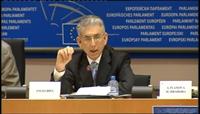 The financial crisis demonstrated, in addition to the weakness of our laws and financial system, also the failure of our ethics. This is one of the main conclusions in the final report on the reasons for the financial crisis in the US, prepared by the National Commission on the Causes of the Financial and Economic Crisis in the United States. Its chairman Mr Phil Angelides presented the findings of the report in the Special Committee on the Financial, Economic and Social Crisis in the European Parliament.
The financial crisis demonstrated, in addition to the weakness of our laws and financial system, also the failure of our ethics. This is one of the main conclusions in the final report on the reasons for the financial crisis in the US, prepared by the National Commission on the Causes of the Financial and Economic Crisis in the United States. Its chairman Mr Phil Angelides presented the findings of the report in the Special Committee on the Financial, Economic and Social Crisis in the European Parliament.
The central question which investigators have pursued was “how did it come to pass that in 2008 our nation was forced to choose between two stark and painful alternatives—either risk the total collapse of our financial system and economy or inject trillions of taxpayer dollars into the financial system and an array of companies, as millions of Americans still lost their jobs, their savings, and their homes?” On hundreds of pages the report describes the incredible way of how the combination of human weaknesses and mistakes, on the one hand and the lack of adequate regulation and actions, on the other, have caused such a global disaster.
In the US alone, as a result of the crisis, 26 million people have lost their jobs, four million families have lost their homes, with another four and a half million facing the same threat, and “11 trillion in household wealth has vanished, with retirement accounts and life savings swept away”.
The conclusions of the investigation, summarised in a few sentences, are that although the preconditions for the crisis have been created for years, it was the collapse of the property bubble - fueled by low interest rates, affordable loans, poor regulation and toxic mortgages – what burst the crisis in its full scale in the autumn of 2008. Then it turned out that “trillions of dollars in risky mortgages had become embedded throughout the financial system, as mortgage-related securities were packaged, repackaged, and sold to investors around the world.” The losses were additionally multiplied by the derivatives (financial instruments whose value depends on other, underlying variables and are contracted for a future time).
The report describes in detail the whole chain through which the subprime mortgages intoxicated the financial system, not just in the U.S. but also globally. From the moment that the owner has signed the mortgage contract and got the keys, the loan had already been in the game. Together with other loans it was packaged and sold to securitisation companies and investment banks. They would repackage the loans into mortgage–backed securities which would receive the highest possible credit rating AAA from the credit rating agencies and would be sold to the investors like hot cakes.
In most cases, a new repackaging would follow (often of the riskiest loans) into derivative financial instruments, which would have again the highest credit rating to convince investors in their quality and safety. In search of new ways to gain bigger profit, an insurance was invented against security’s defaulting - the credit default swaps (CDSs). There was room for everyone in the CDSs market because investors made different, often opposing bets, so the market for these instruments became incredibly complicated and entangled. “So by the time the process was complete, a mortgage on a home in south Florida might become part of dozens of securities owned by hundreds of investors—or parts of bets being made by hundreds more.”
A fundamental principle of the scheme was that each participant believed that it was possible to transfer risk to the next one in the pipeline at any time. However, it was sufficient the first in the chain to stop paying his mortgage in order to prove that all were wrong.
Now when we say that the crisis has passed, this scheme seems both incredibly complex and absurd, given everything we already know. And for the same reasons, the conclusion of the investigation sounds even more absurd that the crisis could have be avoided, because it was not the result of a natural disaster, for example, but of human actions and inactions. “The captains of finance and the public stewards of our financial system ignored warnings and failed to question, understand, and manage evolving risks”. And there were signs: the boom of risky subprime lending, securitisation (the most common - repackaging of mortgages into various financial instruments), the unsustainable rise of property prices, huge increase of mortgage debt of households and “exponential growth in financial firms’ trading activities, unregulated derivatives, and short-term “repo” lending markets”.
However, nobody has reacted. The Federal Reserve did not impose stricter standards for mortgage loans, the financial institutions made and sold toxic mortgages, investors bought them, because credit rating agencies gave them the highest rating, and “firms depended on tens of billions of dollars of borrowing that had to be renewed each and every night, secured by subprime mortgage securities”. From 1978 to 2007 the financial sector debt increased from 3 trillion dollars to 36 trillion dollars. However, between 2001 and 2007 national mortgage debt almost doubled. And one in 10 mortgage borrowers in 2005 and 2006 used the option to pay minimal payments so their mortgage balances rose every month.
“What else could one expect on a highway where there were neither speed limits nor neatly painted lines?”
The crisis demonstrated the failure of financial regulation and supervision which is partially due to over-reliance on self-regulation by financial markets and self- governance by financial institutions, the report reads. Regulators had the power to protect the financial system, but chose not to use it, while the financial industry exerted enormous pressure on politicians and regulators: “From 1999 to 2008 the financial sector expended $2.7 billion in reported federal lobbying expenses; individuals and political action committees in the sector made more than $1 billion in campaign contributions”.
Another reason for the crisis was the failure of corporate governance and risk management. Too many institutions of systematic importance “acted recklessly, taking on too much risk, with too little capital, and with too much dependence on short-term funding.” It got to the point that in many cases “too big to fail” turned into “too big to manage”, and risk management became a risk justification.
The crisis was catalyzed by the explosive combination of huge loans, risky investments and the lack of transparency. According to the report, the largest investment banks in the US (Bear Stearns, Goldman Sachs, Lehman Brothers, Merrill Lynch and Morgan Stanley) were operating with very little capital as “their leverage ratios were as high as 40 to 1, meaning for every $40 in assets, there was only $1 in capital to cover losses”. Even worse was that many of their loans remained hidden from the other market participants and the regulators, mostly because of the derivatives.
Lehman Brothers alone, shortly before it collapsed, appeared with over 900,000 derivative contracts. According to the investigators, a special tribute to the disaster had the OTC (over-the-counter) derivatives. Being outside any regulation, they suddenly went out of control and reached the unimaginable 673 trillion dollars in notional amount. Through the OTC derivatives the losses multiplied and spread globally.
On top of that it appears that the US government was not only unprepared for the crisis, but its inconsistent actions reinforced the panic of the financial markets. On the eve of the crisis, senior officials didn't even recognise that the outbreak of the property bubble could threaten the entire financial system. Until August 2008, weeks before the government took control of Fannie Mae and Freddie Mac, the Treasury Department had no idea how dire their financial situation was. Moreover, some inconsistent government's decisions followed: to rescue Bear Stearns and to take control of Fannie Mae and Freddie Mac, and then to let Lehman Brothers to go bankrupt, but to save AIG.
The conclusion that the financial crisis had also moral dimensions is already not 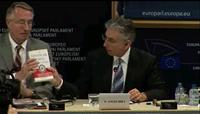 a surprise for anyone. It demonstrated “a systemic breakdown in accountability and ethics,” investigators admit. But the the human weaknesses themselves didn’t cause the crisis: “It was the failure to account for human weakness that is relevant to this crisis.” According to the report, “the crisis was a result of human mistakes, misjudgments, and misdeeds”. Although the blame can be apportioned among all participants in the chain, particularly responsible are people in the highest positions in politics, regulators and financial institutions, because "No one said “no”".
a surprise for anyone. It demonstrated “a systemic breakdown in accountability and ethics,” investigators admit. But the the human weaknesses themselves didn’t cause the crisis: “It was the failure to account for human weakness that is relevant to this crisis.” According to the report, “the crisis was a result of human mistakes, misjudgments, and misdeeds”. Although the blame can be apportioned among all participants in the chain, particularly responsible are people in the highest positions in politics, regulators and financial institutions, because "No one said “no”".
Obviously, these conclusions apply not only to the United States – it appeared that, tempted by the easy profit, nobody in the world could say “no”. Now all think they have learned the lessons from the crisis and could create a new order, new regulation, new morality. This effort will take years, in parallel with the effort to restore the economy. The question is how much the world could be changed while at the heart of this change are the same people, still driven by the eternal forces of greed and fear.
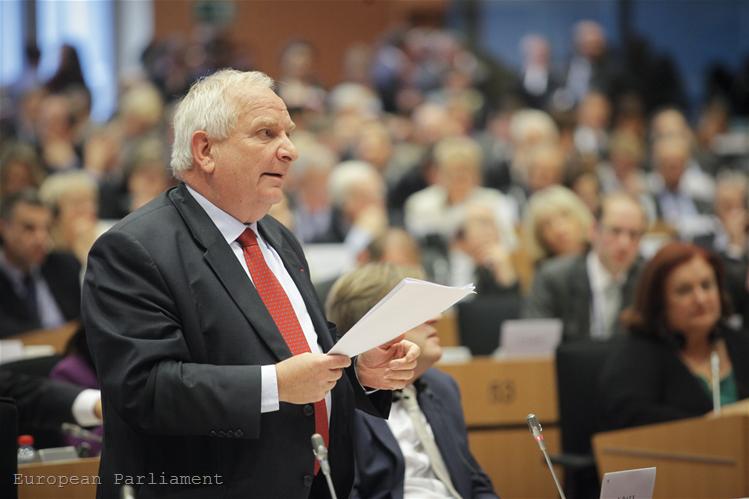 | © European Parliament
| © European Parliament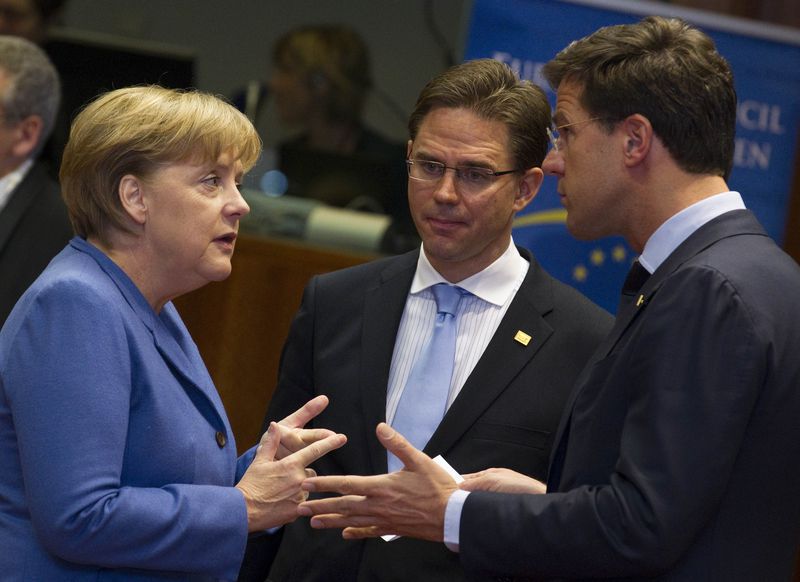 | © The Council of the European Union
| © The Council of the European Union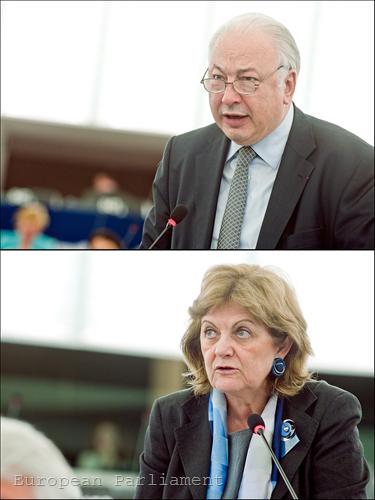 | © European Parliament
| © European Parliament